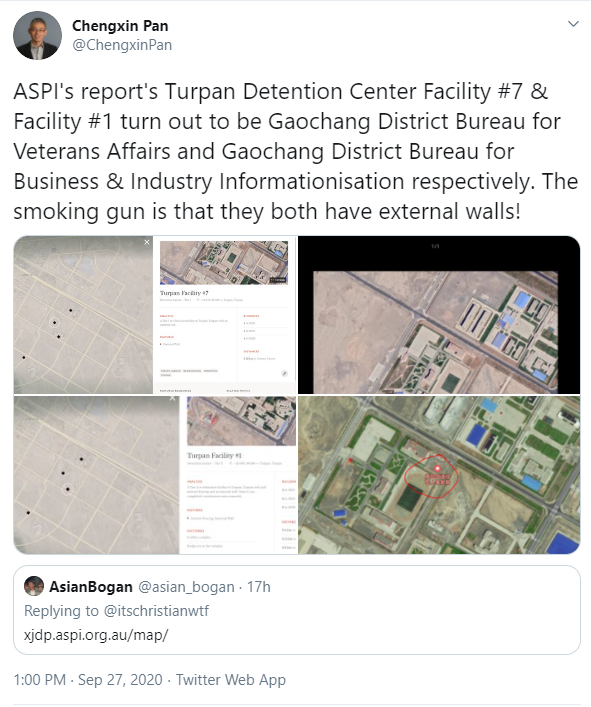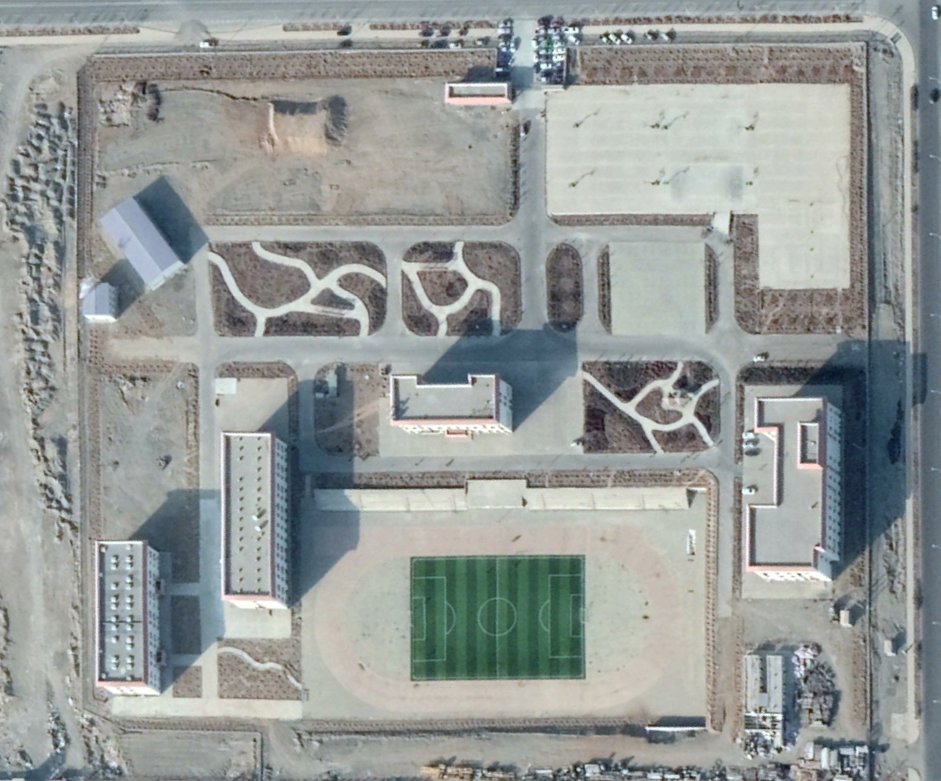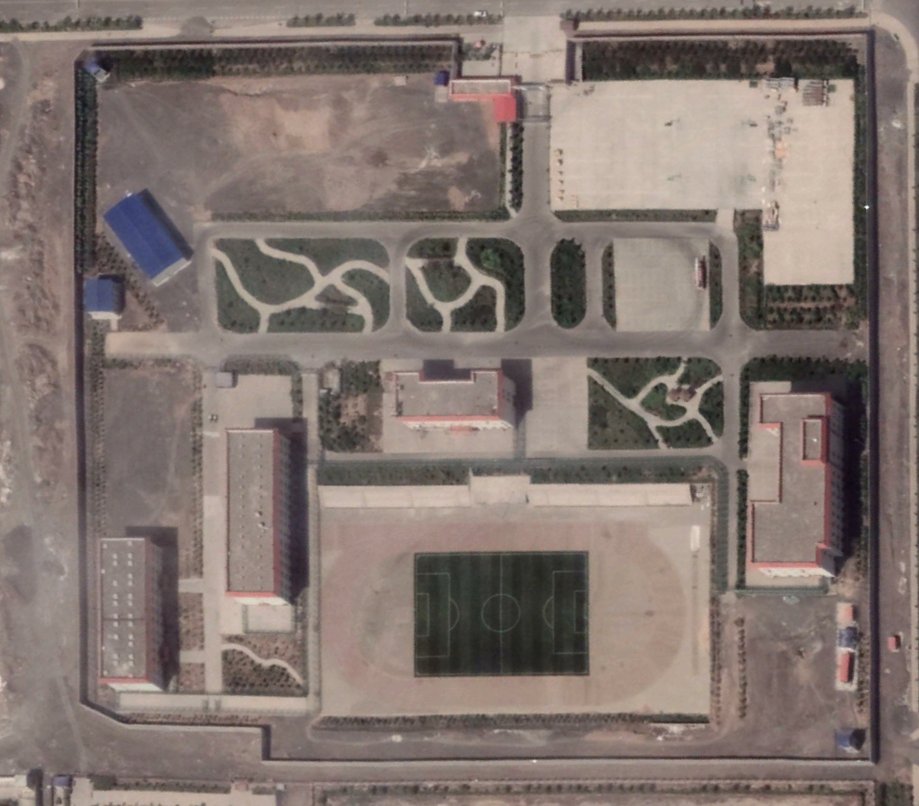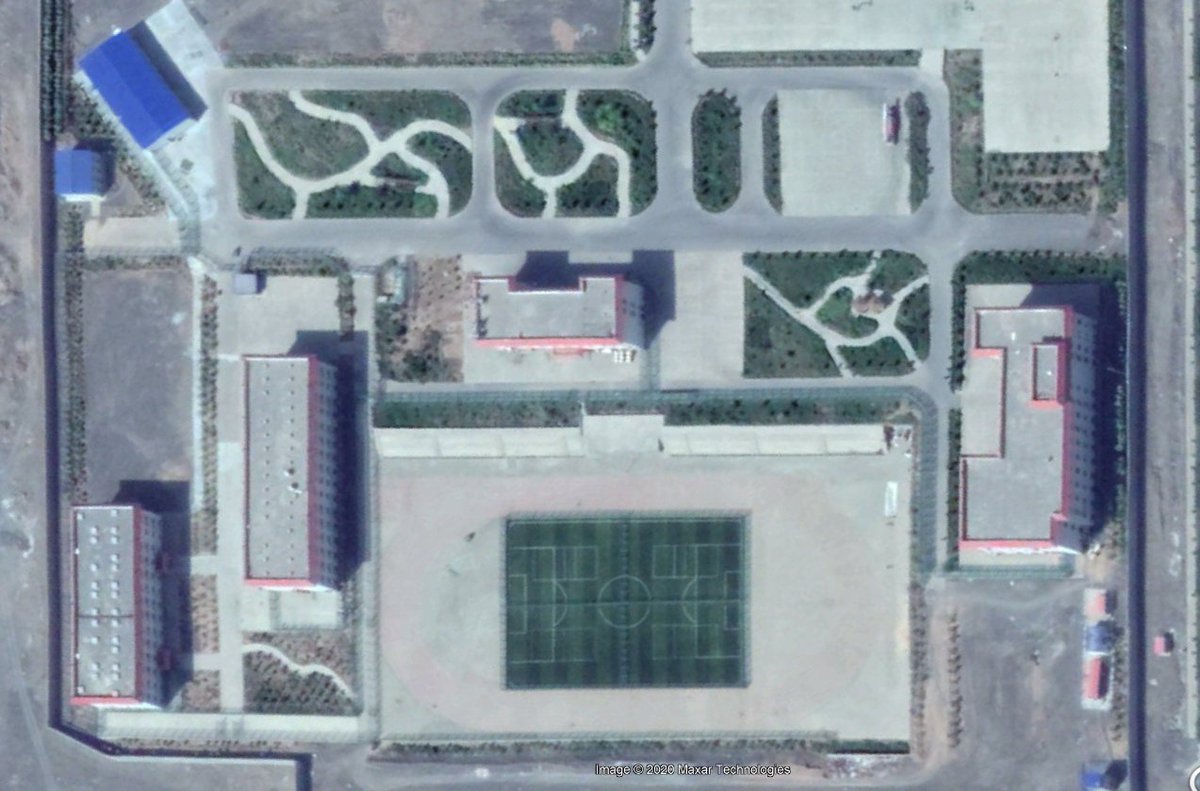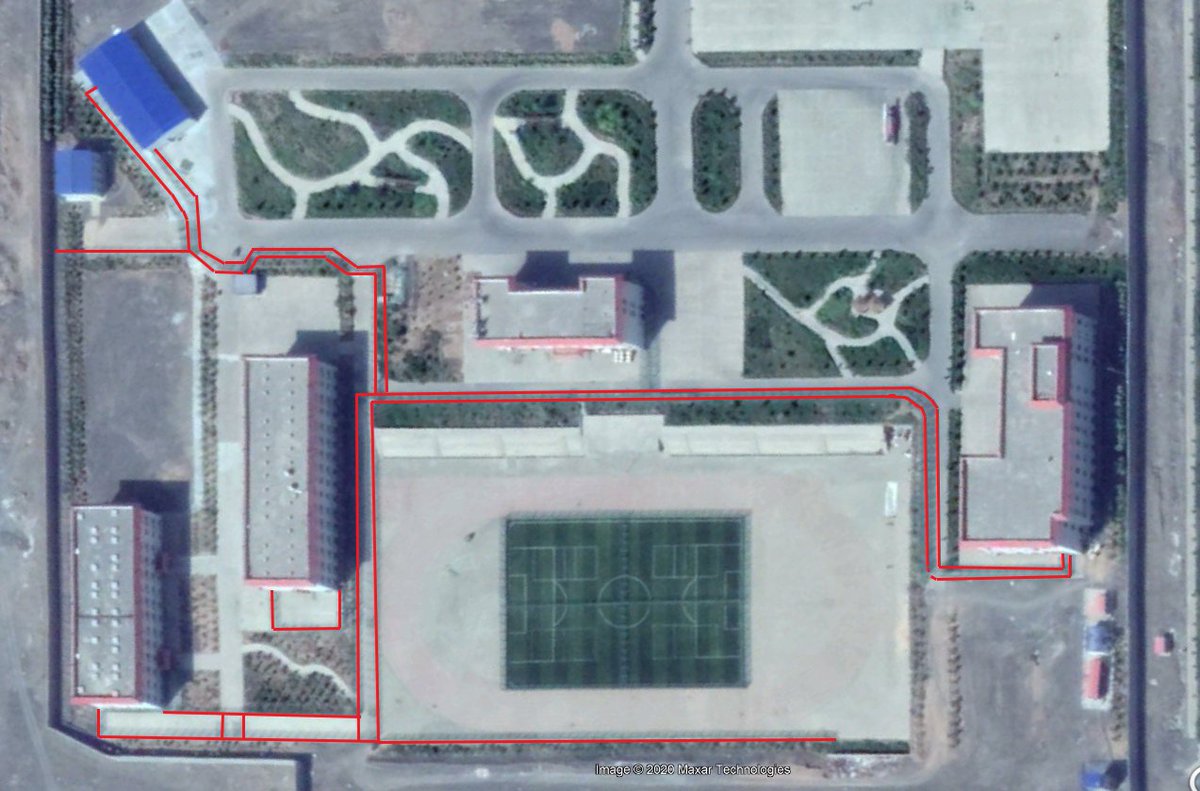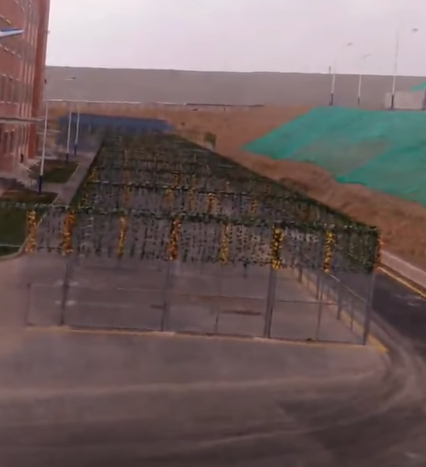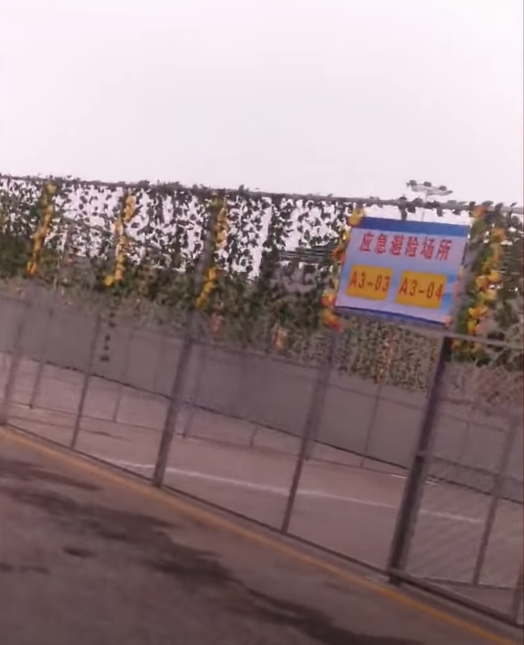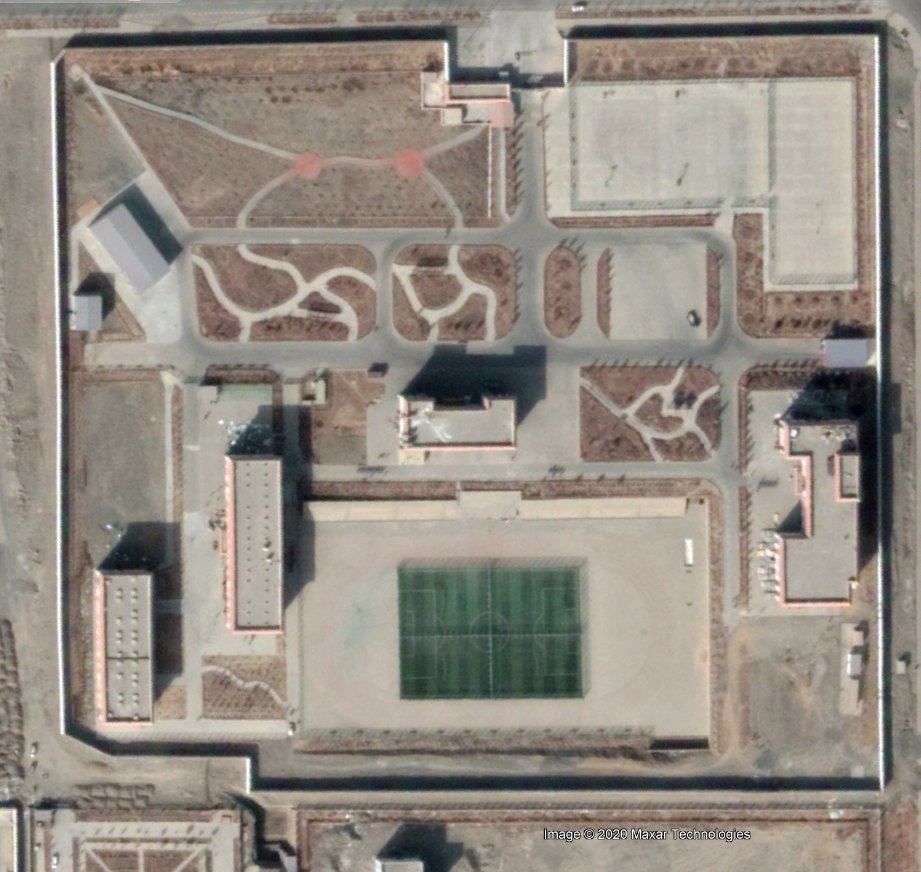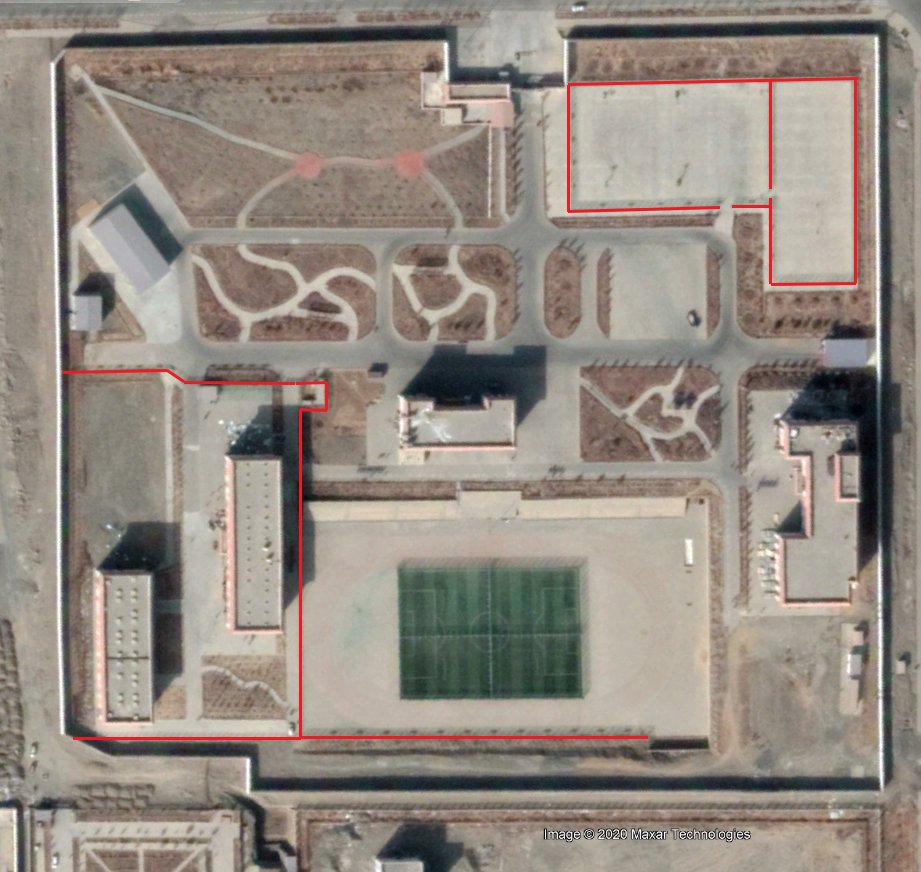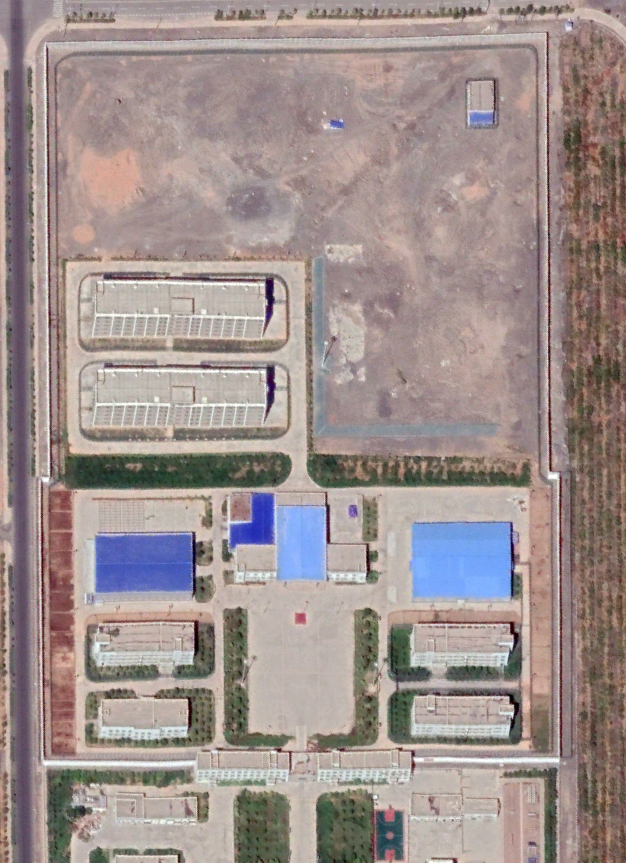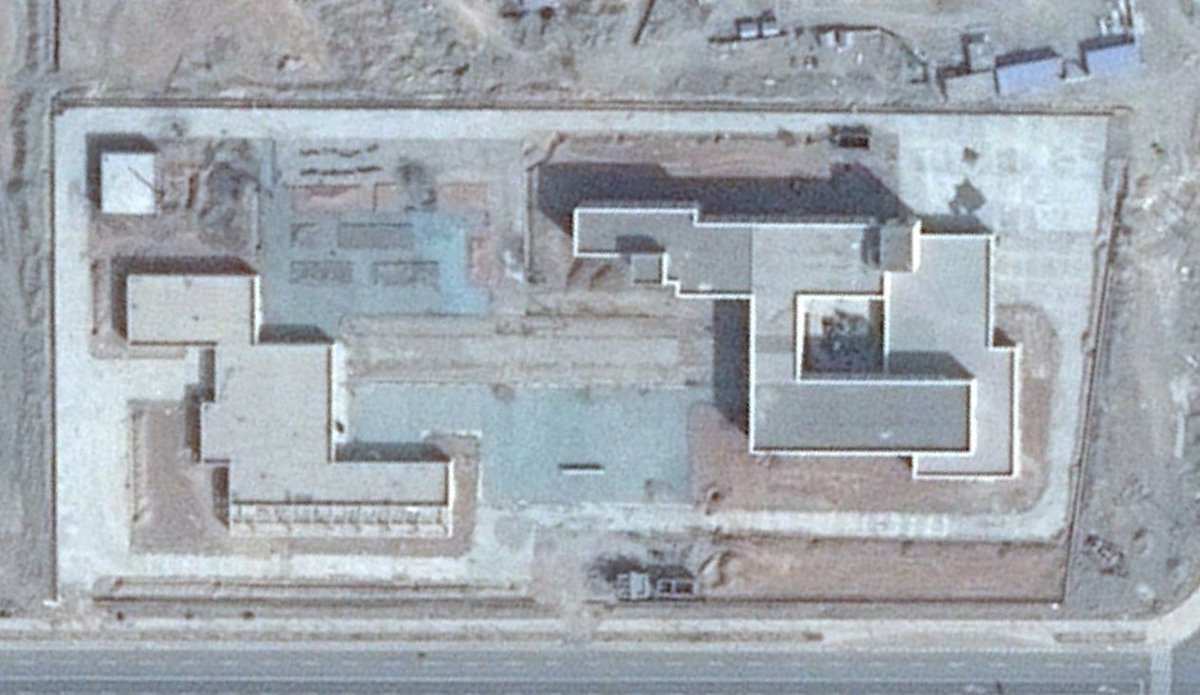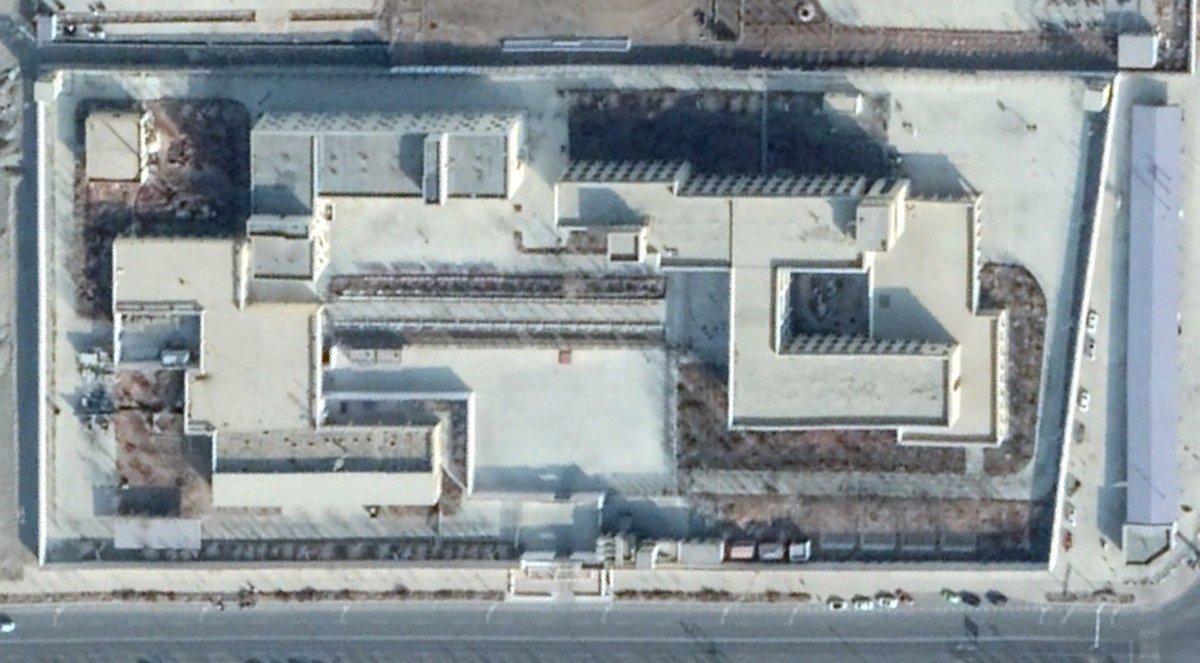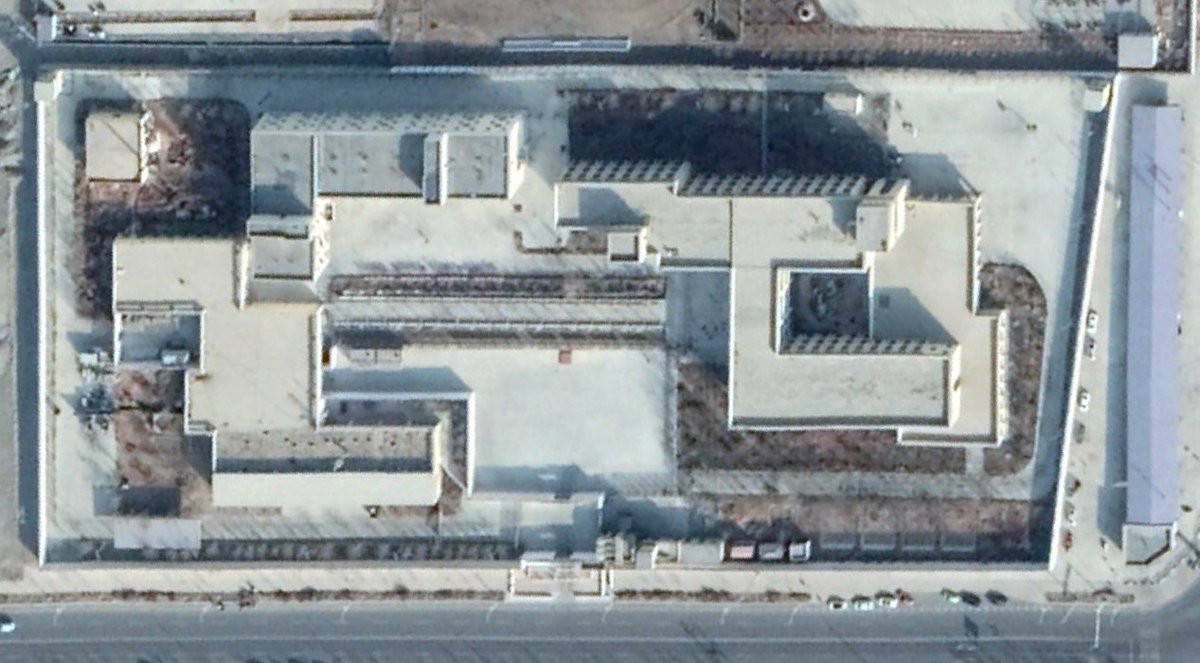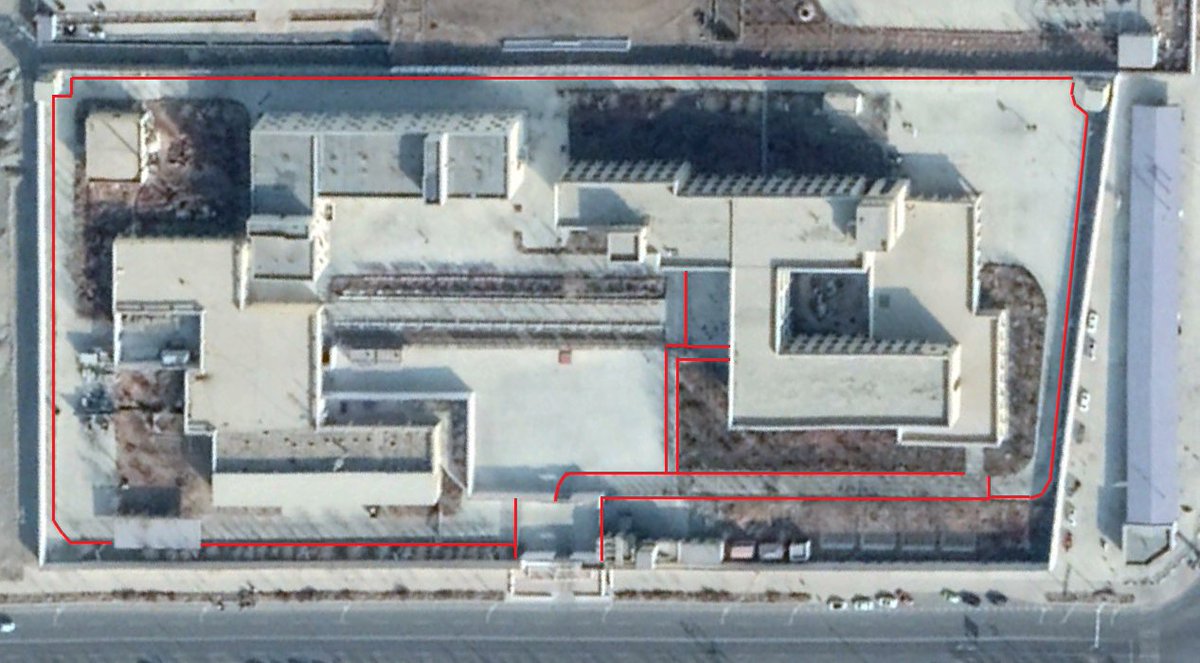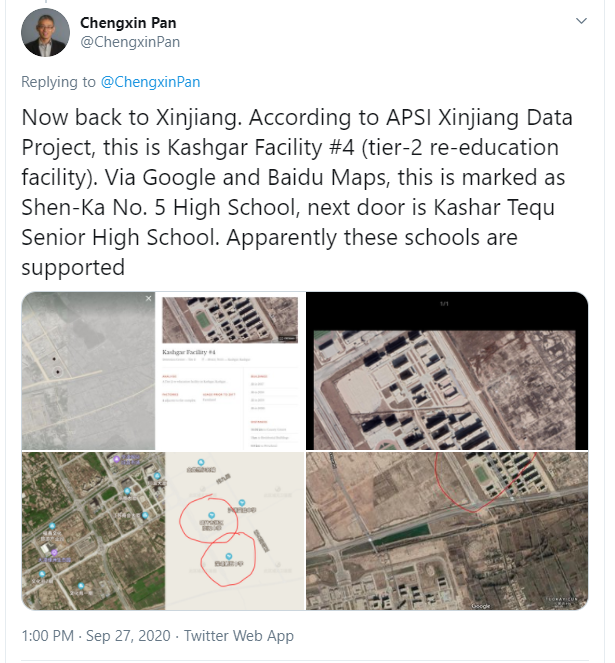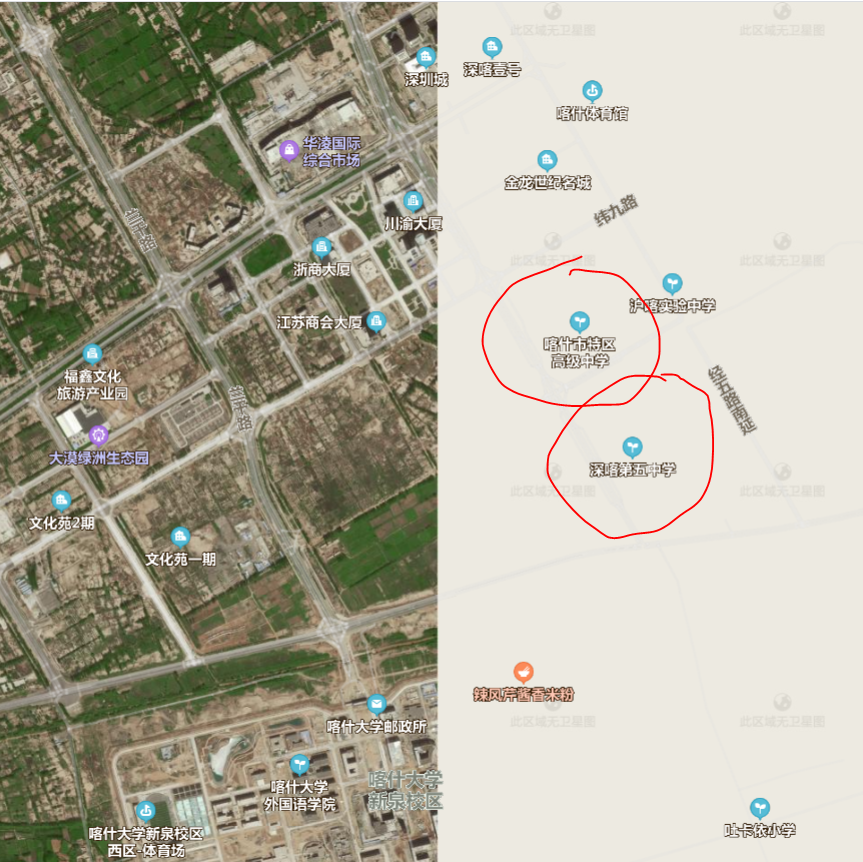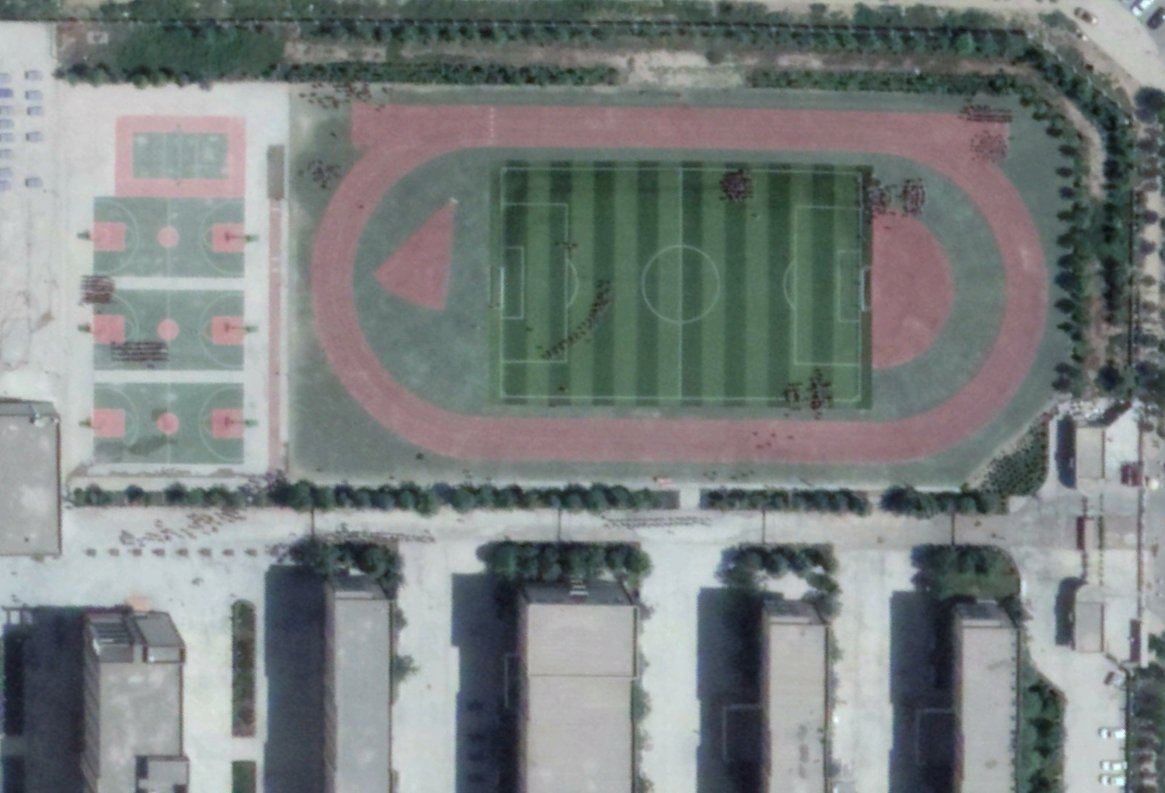This professor is also pointing fault at our recent Xinjiang Data Project, but seems to be completely unable to comprehend that when you detain hundreds of thousands of people over a few months you run out of places to put them. Both these facilities were transformed into camps.
The Veteran& #39;s affair bureau used to look like the first picture. Nothing untowards here at all, and we would never claim that this picture showed a camp. In March 2018 authorities erected a tall concrete wall around the entire perimeter, put guard watchtowers on two corners...
... aded a highly securitised, two tiered entranceway (at the only gap in the 5m tall perimeter wall), with an extension of the guard post, and established heavily fenced areas to limit detainee& #39;s movements in the camp. You can see very clear fencing here, highlighted.
Photos leaked by activists - who were later disappeared - show similar fencing at a different facility in Xinjiang. Which do not look exactly normal for a veterans affairs office, especially considering all the new securitisation.
In early 2019, in line with a lot of similar low-security camps, many of these fences were removed as were the watchtowers, however the camp was not desecuritised as a number of similar fences remain, just slightly less pervasive.
It is also directly next door to a much less ambiguous detention facility, that @ChengxinPan also must have seen but made no mention of. That& #39;s not proof in and of itself, but we do know often detention camps are built in complexes of 2 or 3 (in this case 3) facilities.
Likewise, the bureau of business and industry shows an identical pattern of development, although it looked to be slightly earlier. First photo shows it before, second in Jan 2018, with watchtowers, heavy metal entrance gate, full external perimeter wall and internal fencing.
The fencing is a bit harder to see here because of the trees (and the fence& #39;s shadow is the main way that you can see it), but by looking at a number of other satellite pictures from 2018, this is my best bet at how the fencing was set up.
This facility also seems to have been more comprehensively desecuritised, with watchtowers removed, and all internal fencing and walls removed, along with the highly securitised gate. It may well be entirely decomissioned now, would need confirmation from the ground to know.
It still has a number of cars parked out front, which is generally suggestive of it still being in use, but because this was a camp jerryrigged out of a former government building, it may have reverted back to being the bureau of business and industry information.
As @ChengxinPan is a academic in Australia (albeit a Xinjiang denialist one) I would ask that he address these findings in his post trying to debunk our findings, or delete in entirely.
If you have any further questions, I& #39;m happy to respond.
If you have any further questions, I& #39;m happy to respond.
BONUS: He also says that these camps on the outskirts of Kashgar are just schools, nothing to see here. Luckily Chinese state media confirmed these two as camps!
https://twitter.com/HuXijin_GT/status/1055013584806256644
We">https://twitter.com/HuXijin_G... also have LOTS of primary documentation
https://twitter.com/HuXijin_GT/status/1055013584806256644
We">https://twitter.com/HuXijin_G... also have LOTS of primary documentation
By the way, @ChengxinPan is also mischaracterising our research, claiming we& #39;re calling a school that we have never said is a camp, a camp. The N school he highlights here & shows video from is a school. We have never claimed it wasn& #39;t. You even see kids playing on the oval.
A can put it down as a misunderstanding of our findings and not actually looking into the coordinates we provide, but I expect him to either amend his twitter thread or delete those claims, considering theyre not just wrong but mischaracterising our research.
He has also shared in that thread misinformation about another detention facility in our database. I have disproved that misinformation in this thread. https://twitter.com/Nrg8000/status/1309852344792743939">https://twitter.com/Nrg8000/s...

 Read on Twitter
Read on Twitter